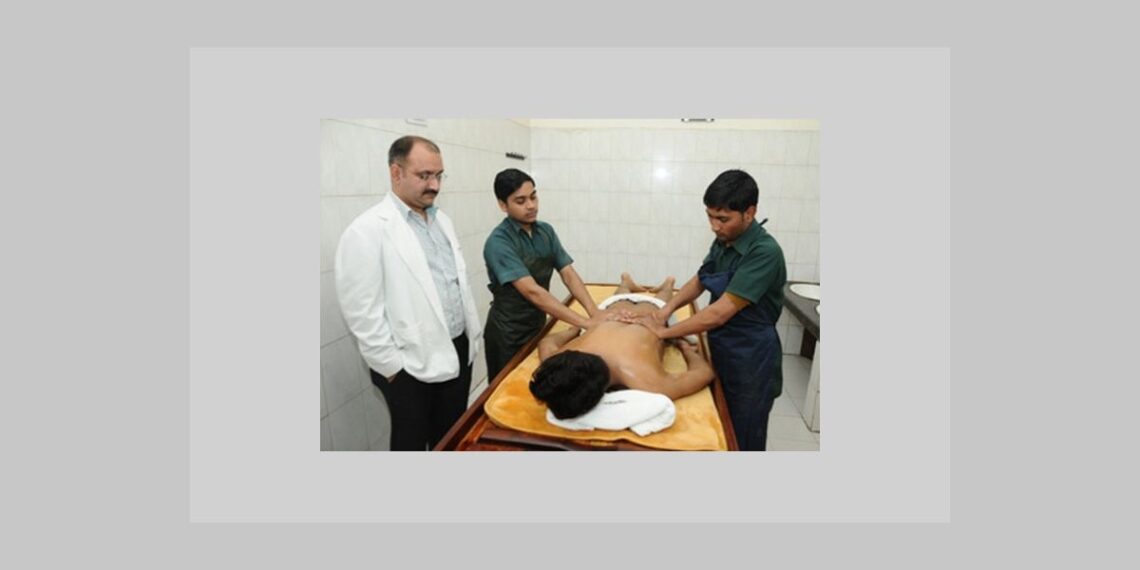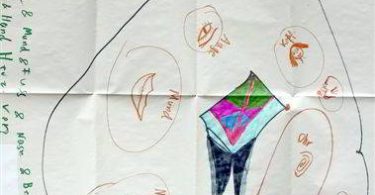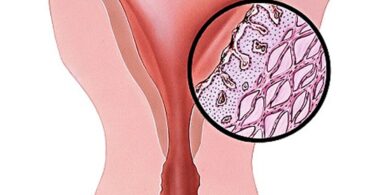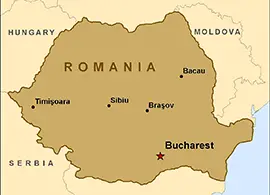Homeopathy is an energetic medicine. The energy of a remedy resonates with the energy of a person’s vital force to overcome disease, and the job of homeopaths is to understand as best we can the nature of this vital force. Therefore, the patient’s energy is of prime importance throughout the consultation process, as well as for the action of remedies. The homeopathic consultation is usually private, with the possibility for uninterrupted healing to take place, and allows personal conversations and in-depth questions to be asked in the strictest confidence. As students, we decided to explore whether a college video-link clinic kept this energetic healing process alive. We will examine this through the account of one person who has seen the clinic from all angles, and through the answers to questionnaires that were sent to case-takers, patients and observers, to discover how they feel about the clinic and the energies at work within it.
“In the healthy condition of man, the spiritual vital force (autocracy), the dynamis that animates the material body (organism), rules with unbounded sway, and retains all the parts of the organism in admirable, harmonious, vital operation.” Hahnemann, Aphorism 9 [1833: 58].
“Substances, which are used as medicines, are medicines only in so far as they possess each its own specific energy to alter the well-being of man through dynamic, conceptual influence, by means of the living sensory fibre, upon the conceptual, controlling principle of life.” Hahnemann, footnote to Aphorism 11 [1833: 60].
The college clinic is run by final year students and is a low-cost, teaching, video clinic, supervised by qualified, experienced homeopaths who work in and run the college itself. Consultations take place in a small room adjoining a larger one, with a video-link that allows real-time homeopathy to be practiced and viewed. The consultation is private in one way, but the live feed allows other students to view the whole procedure, take notes and often discuss cases afterwards. Mostly, once discussions have taken place, the supervisors will put forward their thoughts about prescription, potency and possible outcomes based on the students’ choice of treatment. There are two students for each patient, a case-taker and one sitting in the consultation in a ‘passive’ role. Full responsibility for meeting the patient, ensuring a working video link, case-taking, analysing, prescribing, payments and appointments, all rests with these two. The rest of the third and fourth year students watch via the video link. The clinic is an excellent way to learn good homeopathic practice in a safe, supervised environment. Case-takers learn the job of running a clinic and managing patients, and are able to try out their skills with room to make mistakes. Observers are able to see homeopathic theory coming to life, watching how the energetic healing process works through consultations and remedies.
Can the energy of the homeopathic process combine with student learning, and how does it function in the student clinic? One way in which we sought to gain insight, was through the experiences of one person, now a fourth year student, who has seen the clinic from every perspective. Here is her story.
A Personal Account
“In 2008 I was a patient at The Contemporary College of Homeopathy. In the first instance I brought my children to the clinic and subsequently became a patient myself. At the beginning I was aware of the camera, the setting up and turning on was always a part of the appointment and sometimes the link would need adjustments from the students or lecturers, who appeared from another room. Although this did distract from the start of the consultation, I was never aware of the number of people watching, assuming mostly it was lecturers assessing the student homeopath, not watching me.
As a mother of the patient, the camera quickly became unobtrusive and only a silent observer in the room. The students taking the case seemed relaxed and unbothered by its presence. Occasionally my mind would drift and I would wonder about who was watching and what they were thinking – but overall it didn’t affect my answers to the questions I was asked.
As a patient myself I was certainly more aware of the camera, the questions were directed at me and I was in the ‘hot’ seat as I called it – the camera pointing at my face. I found this had more of an effect on me, and during the pauses in the appointment I would start to become curious about the faces behind it and what they were thinking, self-conscious I suppose. There were most definitely questions that, had they been asked, I would not have answered on camera – luckily this didn’t happen and I didn’t have to avoid them.
In 2012, as a clinical student homeopath, I was on the other side of the camera in the live feed room watching the patients during their appointment. As an observer, the atmosphere is different; the camera doesn’t lie, yet it does lack a ‘real’ feel to what is happening on screen and there is something missing. Sometimes it is hard to hear and concentrating in a large room full of students can be difficult. There is an element of confidentiality that is open to many students at the same time, and opinions differ in how the patient comes across. It is fascinating to see the clinic run like this, a real live patient on camera in the next room, so much can be learned from watching them and the students in action. You see their faces and expressions as they tell of their symptoms, complaints, anecdotes. I often want to ask another question, or express my thoughts and this of course is not possible.
In 2013, as a passive student in front of the camera, it is now my task to set up the camera and ensure it works effectively. This is not easy for a technophobe! At this point I wonder if a less obtrusive CCTV scheme could be set up, allowing the camera to be less obvious during the appointment – the camera is an obvious distraction when it won’t work and takes the focus of the patient away from homeopathy. Suddenly I became frustrated by the silent observer and its lack of empathy.
Then as an initial case-taker, my opinion changes again. I’m acutely aware of the camera. I’m the one taking the case and my memories flash back to being the patient years ago – only I now know who is watching and why – my heart races and I feel sick – my knowledge as a homeopath was wiped out by camera fear! Luckily I had the wisdom of using a script, but the whole case-taking for me was shadowed heavily by what the clinic were thinking and how I should react to my patient…not at all how it should be. After feedback, that wasn’t how it appeared, but the camera had a huge influence on me during the case-taking.
Overall, having a video clinic is excellent. It works well for many patients, observers and case-takers. However, in my experience, anyone who has a camera phobia may not give or take a full and detailed case. This may not be such a problem, as the patients are aware of the set-up before they come for the appointment and those with issues about being on camera need not apply! As for the students, well I’m luckily only having one patient on camera, an experience I didn’t enjoy and will hopefully not have to repeat.
Questionnaires
We decided to explore these areas further by sending questionnaires to case-takers, patients and observers. We asked all three groups whether and in what ways they felt the energetic process was affected by the presence of the camera and the video link. We asked whether it affected questions, answers and the relationship between case-taker and patient. We asked observers about their perceptions of the consultations, and asked how everyone reacted to technical difficulties and the issue of confidentiality. The answers to these questionnaires echoed many of the thoughts and feelings described in the personal account.
Unsurprisingly perhaps, only one of the case-takers felt completely comfortable being on camera, and most felt worried about being judged. However, when asked about their main focus during the consultation, everyone said it was the patient, connecting with and understanding them, and getting enough relevant information. As one wrote, “I’ve learnt [my main focus] to be with the patient, but at the beginning it was ‘I hope this is coming across ok on the camera’.” When asked if people question their patients differently when they are being observed, most said they didn’t. However, one wrote, “there is far less warmth and banter between patient and homeopath; it is far harder to build a good relationship in that environment.” This coincides with my experience of the clinic: everyone is trying hard to be professional and get things right, and sometimes the ‘banter’ of everyday conversation can be lost. In this way the energy has been altered by the presence of the camera, but does it affect the healing process? We will examine this later. The majority felt that their relationship with the patient was affected by the presence of the camera, and one said, “[the patient] behaves completely differently when she is alone with me… She expresses her feelings quite openly… whereas in college she is wearing a mask.” Perhaps this kind of reaction tells us something about the particular patient and their vital force, but it also shows that there is a different energy at play in the clinic setting. Whether case-takers can forget about the camera and be natural seems to depend on the individual. Some were more aware of their behaviour, but others also said they were able to forget about the camera.
No one felt that the clinic set-up affected confidentiality, but four out of five reported that technical problems had affected their sessions and, as one wrote, “This disrupts the flow of the patient.” Nobody actively enjoyed being on camera, but all felt it was a useful tool. One said, “I think it is easier when I am on my own… but the camera is necessary in order to learn. It is a great tool… and I enjoy observing my classmates.” This seemed to be the consensus, that “it is a great experience, I value it for all it has taught me and I would go through it again… we can’t be comfortable all the time and it’s in places of discomfort that we can find our weaknesses and build upon them to be better.” It would seem then that the energy of most case-takers is affected by the presence of the camera and it does change the way in which a relationship is built with the patient. Although the experience is more difficult and more restricting, it seems that understanding patients is still possible, and the process is valued as a learning experience.
For patients, it seems to depend very much on the individual, whether the camera and observers affect them. All are aware of the camera, but whereas one says, “it is a little peculiar – very big brotherish!” another feels, “it is easily forgotten.” Whereas some patients feel they don’t behave or answer questions any differently, others prefer to keep certain areas of their lives private from the observers. One patient wrote that, “Without that camera I would feel far more open. The confidentiality in the room feels breached by the presence of the camera.” It is unlikely in such a case that we will hear the person’s whole story, and the energy will certainly be altered by this feeling of intrusion. The majority had been affected by technical problems, which can disrupt appointments, and one mentioned that, “there have been times when the camera has not worked and so other people have had to come into the treatment room. This changes the atmosphere in the room from the start.” The presence of another person in the room is a very obvious reminder of the others watching and may feel like a violation of the atmosphere of privacy and trust that has been established. Perhaps surprisingly, however, we discover that none of those questioned felt the clinic setup and the presence of the camera had adversely affected their treatment. When asked about the possible healing effects of the consultation itself, all found it to have been a positive experience, and one wrote, “I personally feel that the consultation does have a healing effect despite the camera/observers as I quickly forget that its present!” All the patients reported positive healing outcomes and one patient stated that, “The clinic has been wonderful, professional and friendly at all times… Throughout all treatments I have been imbued with confidence that I am in good hands.” It seems remarkable that despite disturbances to the energy and flow within this kind of consultation, homeopathy still manages to win through.
It appears then that despite some problems and energetic disturbances, the clinic is working in a positive way for patients and case-takers. But how is it working for observers? It would seem from their answers that they have a different experience of the clinic and the energetic processes at work. The observers all felt they gained from watching consultations via the video link, picking up useful tips on case-taking, increasing their exposure to a variety of cases, and seeing remedies at work. They weren’t sure whether the camera affected the case-taker or patient, so clearly these energies were not coming across, although they realised that some patients must be affected because they didn’t want to discuss certain things on camera. All felt that something was lost by watching on video, rather than being in the same room. Firstly, technical difficulties meant it was sometimes very hard to hear, so they didn’t always get the full story. Technical problems seemed to be an issue for all observers, although one managed to make the most of a loss of sound, writing, “I watched the silent scene but picked up a change in the person being interviewed… I could see the non-verbals and exchanges that indicated that there was some cure or changes going on… I got a lot out of it.” Secondly, it seems people felt that the energy of the patient didn’t always communicate well. One wrote that observers, “don’t experience the energy coming off the client” and another that, “some of the emotional feeling is lost down the wire.” The majority of observers also felt that their experience of the consultation did not match that of the case-taker, and one stated, “We as observers are not sensing the same things that the case-taker senses by being in the same room.” Despite these difficulties, all the observers felt they had seen healing processes taking place, and one writes, “Unquestionably there is a healing process going on… you couldn’t get actors to do this.”
Most felt there were restrictions to being an observer, because there was no possibility of asking questions, and many seemed unsure of where they fit into the process. There was a sense of exclusion that came across in the answers to the observers’ questions: the focus is always on the patients and the case-takers, and they seemed unsure what they should do with their energy and reactions in this situation. However, the consensus was that it was still a useful experience. One comment was that, “I think it is a useful process but… it seems very remote being a third year.” Other comments were entirely positive, such as “This is one of the most valuable aspects of this course – it enables me to get a lot of experience both observing and then working out the solution without the pressure of responsibility to ‘get it right’.”
The energy in the college clinic is focused on patients and case-takers. They feel the heat of the observers’ energy through the camera, but also feel the benefit of this focus, through learning and experience for the case-takers and healing for the patients. The observers, however, are merely watchers; they are not included in this focus of energies, which dissipates as it is projected through the video link. Technical difficulties can contribute to this problem and, while they feel they are learning, they are not always energetically engaged.
Conclusions
The college video clinic is an imperfect tool for the practicing and learning of homeopathy, and is not an accurate representation of the consultation process outside college. Energy is consumed with worries about being judged or maintaining privacy, and relationships are harder to establish. The observers’ group is the one which seems to fare worst as they get a diluted energetic experience. Perhaps a more vigorous and inclusive discussion process would allow them to be more involved. Some technical improvements, with a less obvious camera and better sound quality, would help all parties. Having said this, all groups find the clinic to be of great benefit. The observers watch the healing process at work, the case-takers learn from their experiences and, most importantly, patients get better.
There is no doubt that the consultation can be a very important part of the homeopathic process. It is where information is discovered and connections established, between symptoms, life events, and also between people. When people’s energies are focused in this way, understanding can occur, which may be felt as a positive experience or as an actively healing process. As Todd Rowe writes, “In casetaking… we are trying to understand the person sitting in front of us as deeply as we can… in this process, there is often a deep connectedness that occurs… Eventually, you get to a place of integration… where there is insight into the core issues leading to a deeper understanding of the patient. When you get to this level, a healing energy with a life of its own has been born [Rowe, 1998: 23-24].” Sometimes, we can imagine that without this kind of pure connectedness, it is all for nothing and that during each consultation a delicate balance of energies must be held in perfect harmony in order for the homeopathic process to take place. Sometimes we may even be influenced by the sceptics who believe that any healing takes place only because of the good feeling that is created between practitioner and patient. Our study of the college clinic shows that the process is much more robust than that. It is not the perfect set-up for case-taker or patient, as the energies of both are affected by the camera, but homeopathy still works. The kind of information that the homeopath needs to understand the nature of a patient’s vital force, the connections that are made during this process, the individualisation involved, the holistic nature of homeopathy and the action of the remedies themselves, have been so beautifully constructed that they encompass all that is required to start the healing process. These are the reasons why people feel better and why they feel understood. It seems that it would take more than a few disruptive or even intrusive energies to destroy this.
BIBLIOGRAPHY
Hahnemann, S., trans. Boericke, W., 1833 (1921 edn.), Organon of Medicine Sixth Edition, B. Jain Publishers (P) Ltd, New Delhi
Rowe, T., 1998, Homeopathic Methodology, North Atlantic Books, Berkeley, California





